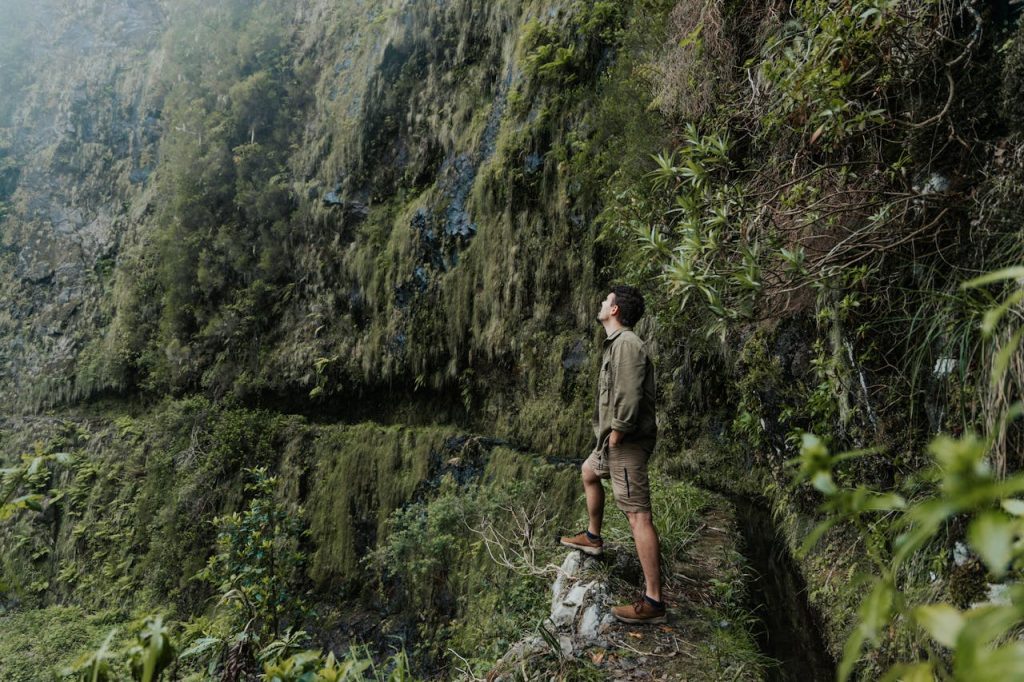Hiking is an adventure that feeds the soul, challenges the body, and expands the horizons of our experience. Among the essentials for any hike, water ranks at the top. Staying hydrated is crucial, yet carrying water can sometimes feel like a puzzle. This guide explores practical, innovative ways on how to carry a water bottle while hiking, ensuring you stay hydrated without adding unnecessary burden to your journey.
Choosing the Right Water Bottle
Table of Contents
ToggleBefore diving into how to carry water, selecting the right water bottle is paramount. The ideal bottle should be:
- Lightweight: Every ounce counts when you’re hiking.
- Durable: It should withstand falls and not leak.
- Capacity: Depending on the length of your hike, choose a size that ensures you have enough water without frequent refills.
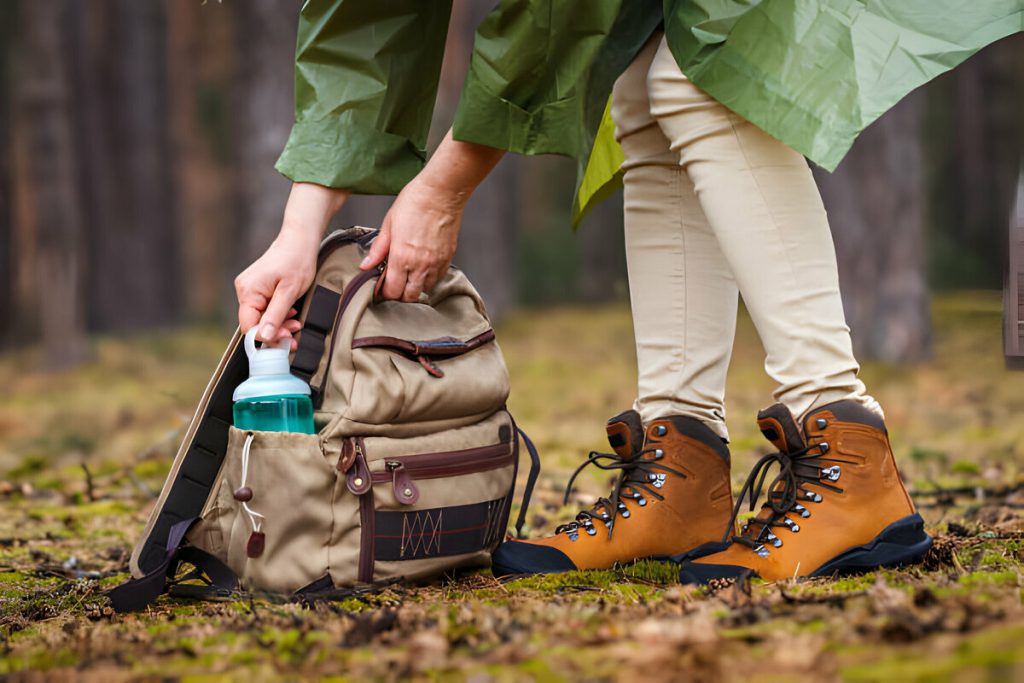
Innovative Carrying Solutions
Hydration Packs
Hydration packs are a popular choice for many hikers. These packs come with a water bladder and a hose, allowing you to drink hands-free. They distribute weight evenly across your back, which is essential for longer treks.
Bottle Carriers and Clips
For those who prefer traditional bottles, carriers, and clips offer a convenient solution. They can be attached to your backpack’s shoulder straps or waist belt, making your water easily accessible.
Multi-Purpose Gear
Some hiking gear comes with built-in water bottle holders. Choosing multi-purpose equipment can save space and reduce the weight of your pack.
Staying Hydrated: Tips and Tricks
- Start Hydrated: Drink water before you begin your hike to ensure you’re starting off well-hydrated.
- Sip Regularly: Don’t wait until you’re thirsty. Regular sips are the key to staying hydrated.
- Monitor Your Intake: Keep track of how much you’re drinking to ensure you’re consuming enough throughout your hike.
Key Takeaways
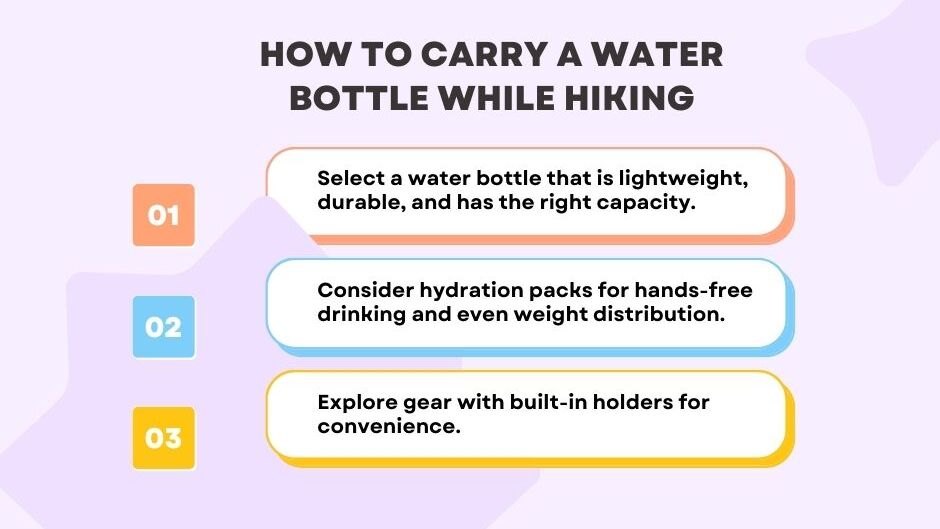
Why Is A Water Bottle Carrier A Good Choice For Hiking
A water bottle carrier is an excellent choice for hiking for several reasons, making it a popular option among outdoor enthusiasts. Here’s why:
Easy Access to Hydration
- Immediate Access: A water bottle carrier allows you to access your water easily without having to stop and remove your backpack. This convenience ensures you stay hydrated, especially on challenging trails where maintaining momentum is key.
Weight Distribution
- Balanced Load: Carrying water on the outside of your pack can help distribute the weight more evenly, especially if the carrier allows for attachment at strategic points. This can lead to a more comfortable hike, reducing strain on any single part of your body.
Versatility and Compatibility
- Universal Fit: Many water bottle carriers are designed to fit a variety of bottle sizes and shapes, making them versatile accessories for any hike. Whether you prefer a slim, insulated bottle or a larger capacity container, there’s likely a carrier that fits.
Protection and Insulation
- Keeps Water at Desired Temperature: Some carriers come with insulation, helping to keep your water cool in the heat and prevent freezing in cold weather. This feature enhances the overall hiking experience by ensuring you have access to water at a comfortable temperature.
Frees Up Space
- More Room in Your Pack: By carrying your water bottle outside your backpack, you free up valuable space inside for other essentials like food, clothing, and first aid supplies. This can be particularly beneficial on longer hikes where extra gear is necessary.
Durability and Safety
- Prevents Leakage Inside Your Pack: A carrier also acts as an extra layer of protection against leaks. Keeping your water bottle outside your pack ensures that, in the event of a leak, your other gear remains dry and safe.
Environmental Consideration
- Encourages Reusable Bottles: Using a water bottle carrier can encourage the use of reusable water bottles over single-use plastics, aligning with environmentally friendly practices. It’s a small but meaningful way to reduce waste on the trails.
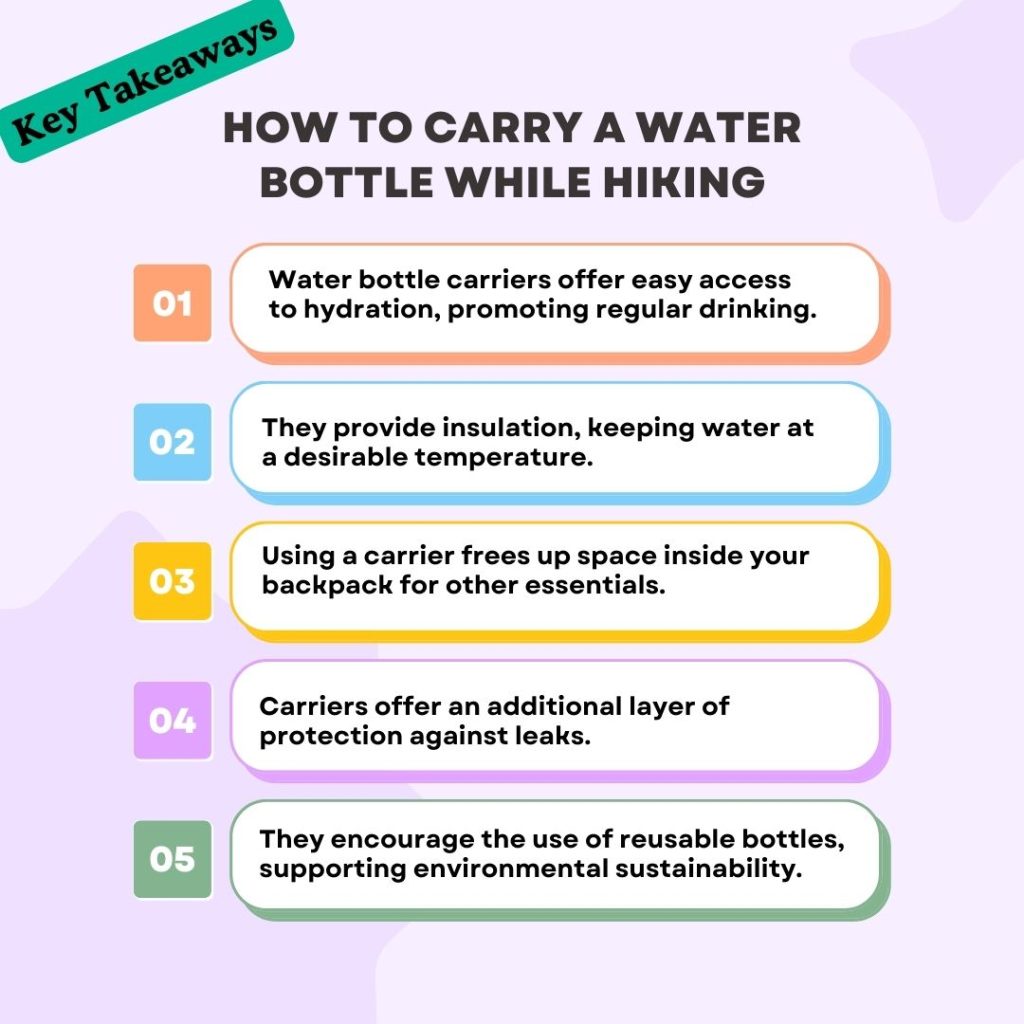
FAQs on How to Carry a Water Bottle While Hiking
How do thru-hikers carry water?
Thru-hikers often use a combination of lightweight, durable water bottles and hydration bladders to carry water. This approach balances ease of access with the need to carry sufficient water for long distances.
What is the best way to carry water when walking?
The best way to carry water while walking is using a comfortable, accessible method, such as a hydration pack or a water bottle with a shoulder strap, ensuring hydration is always within reach.
How do you carry a water bottle and phone while walking?
Carrying a water bottle and phone while walking can be managed with a multi-pocket hydration pack or a waist belt designed for both items, keeping them secure and accessible.
How do you carry water for a day hiking?
For day hiking, carrying water in a hydration bladder or a couple of water bottles in the side pockets of your backpack ensures you have enough water and it’s easily accessible.
How do backpackers carry enough water?
Backpackers carry enough water by using large-capacity hydration bladders, and collapsible water containers, and often plan their route around natural water sources for refilling.
Should you drink water during a hike?
Yes, drinking water during a hike is crucial to prevent dehydration. Regular sips, even before feeling thirsty, help maintain hydration levels and energy.
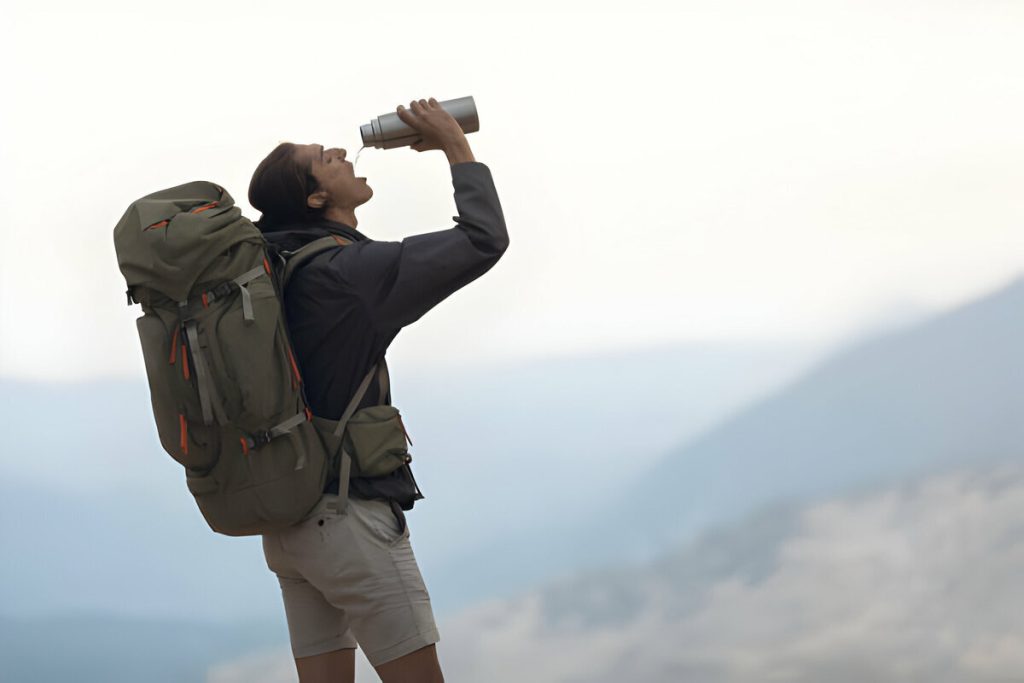
What size water bottle for a day hike?
A water bottle of 1 to 2 liters is generally sufficient for a day hike, depending on the weather, your hydration needs, and the availability of water sources along the trail.
Conclusion : How to Carry a Water Bottle While Hiking
Understanding how to carry a water bottle while hiking enhances your outdoor experience, ensuring hydration is convenient and efficient. Whether you’re a casual walker or a seasoned backpacker, selecting the right water carrying method, such as hydration packs, water bottles with carriers, or multi-functional gear, is key to staying hydrated.
Remember, the method you choose should fit your specific needs, hike duration, and personal comfort. With the right approach, you can focus on enjoying the trail, knowing your hydration is taken care of.
Keep the adventure going – more amazing reads just a click away!
What to Eat Before During and After a Hike


